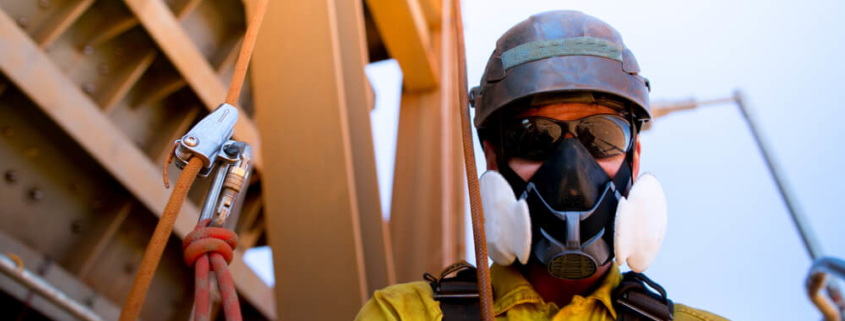How Important Is Personal Protective Equipment (PPE) On a Construction Worksite?
Personal Protective Equipment, or PPE, has received a lot of attention in the news over the past year and a half as a result of the coronavirus and the urge to reduce the spread of the infection. The increased demand for PPE in various industries has led many to think about the necessity of PPE in their own workplaces. While protective gear has always been necessary for the construction industry, the pandemic has heightened awareness about the importance of construction workers protecting themselves. Here’s an overview of the basics of Personal Protective Equipment and how important it is on a construction worksite.
What Is PPE?
PPE is equipment that protects against certain workplace hazards, ranging from falling objects to viral transmission. It is important to understand that PPE includes more than just masks which are intended to help prevent the spread of the coronavirus; PPE in construction refers to a range of different gear. PPE should be thought of as a necessary protection for any worker on a construction site, not merely an accessory.
Common Types of Personal Protective Equipment
Personal protective equipment varies by industry. During the start of the pandemic, masks in the healthcare industry received a lot of attention. In the construction industry, common types of PPE include:
- Hearing protection. Construction workers are often exposed to loud noises that can contribute to occupational hearing loss. The best way to prevent hearing loss is to ensure that all workers are equipped with appropriate hearing protection PPE. This is especially important for workers who are working with loud machines and equipment, or who are on demolition sites where explosions are common.
- Head protection. One of the most important types of PPE is a hard hat, which provides protection from falling objects. Head injuries can occur when a construction worker is struck in the head with an object, or if they fall and hit their head. Certain hard hats can also reduce exposure to high-voltage conductors, and therefore should be used anytime there’s a risk of an electrical hazard.
- Eye and face protection. Falling objects, flames, dust, debris, shards of metal, bright light, and small objects (like nails and screws) all pose a risk to a construction worker’s eyes and face. Wearing eye and face protection when on a construction site, especially when engaging in certain activities—such as welding or working in an area with harmful chemicals—is critical. Eye injuries can be devastating but, fortunately, are almost always preventable with the right gear.
- Foot protection. All workers on a construction site should always wear appropriate work boots that provide protection from punctures and heat, and that provide slip protection. Waterproof boots are also strongly recommended in many cases.
- Skin/body protection. Construction workers are often working outside, exposed to the elements, for hours at a time. While working in the sun may seem enjoyable on a nice day, the reality is that repeated exposure to sun, heat, and other hazards, such as chemicals, can lead to serious illness and disease. Construction workers are at an increased risk of developing skin cancer, a disease that can be prevented by proper skin/body PPE.
- Lung/respiratory protection. Breathing in chemicals, dust, and small particulates on a job site for hours a day, every day, can lead to serious respiratory complications and even cancers and other occupational illnesses in some cases. Wearing an appropriate mask or using another type of respiratory protective equipment is absolutely necessary for construction workers.
Of course, in addition to the above, construction workers should follow CDC and state guidelines regarding the use of masks to reduce the spread of coronavirus. You can read more about OSHA standards for PPE for workers in the construction industry here.
Why Is PPE So Important In the Construction Industry?
Construction workers are at an increased risk of injury based on their occupation; workers in this industry suffer an increased risk of fatal injuries compared to workers in other jobs. Working outdoors, using power tools, working at heights, working with dangerous chemicals or substances, and working with large equipment and machinery can be extremely dangerous. Workers can reduce their risk of injury and occupational illness simply by using PPE appropriately. Managers should make sure that construction workers are trained on the proper use of PPE and that all workers on a site have access to appropriate PPE.
Learn More About The Importance of PPE for Construction Workers Today
If you are a construction industry worker who has more questions about Personal Protective Equipment and how to keep yourself safe in the workplace, OSHA Injury Attorney can help. You can contact us today for answers to your questions about PPE and the law.




Leave a Reply
Want to join the discussion?Feel free to contribute!